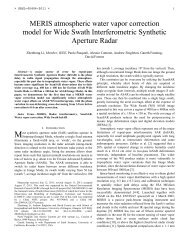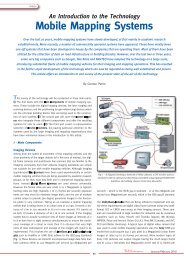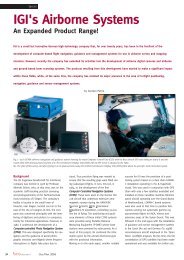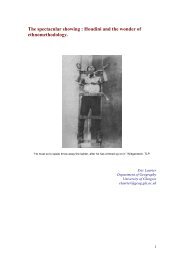Café Ethnography : the uses of tables and chairs
Café Ethnography : the uses of tables and chairs
Café Ethnography : the uses of tables and chairs
Create successful ePaper yourself
Turn your PDF publications into a flip-book with our unique Google optimized e-Paper software.
<strong>Café</strong> <strong>Ethnography</strong>:<br />
Fig. 4 Small c<strong>of</strong>fee table at Starbucks, with closed book, pen, muffin, tall cappuccino,<br />
spectacles, sugar <strong>and</strong> writing on tabletop. We, from a customer's perspective, can see<br />
by <strong>the</strong> spatial arrangement <strong>of</strong> <strong>the</strong>se things <strong>and</strong> by <strong>the</strong> unconsumed status <strong>of</strong> <strong>the</strong> food<br />
<strong>and</strong> drink that its occupant will not be leaving soon. For <strong>the</strong> staff <strong>of</strong> <strong>the</strong> cafe it does<br />
not appear to be ready for clearing.<br />
So what does happen at <strong>tables</strong> in cafes? Clearly we are not going to provide an<br />
exhaustive list but we are, once again, going to turn to some <strong>of</strong> <strong>the</strong> day-in-day-out<br />
patterns <strong>of</strong> interaction which related to <strong>the</strong> arrangement <strong>of</strong> artefacts on <strong>the</strong> tabletop as<br />
relevant to <strong>the</strong> doing <strong>of</strong> informality. Fig .3 is a typical picture <strong>of</strong> a table recently laid<br />
for two people to have lunch at <strong>the</strong> Flaming Cup. In o<strong>the</strong>r more formal eating places,<br />
<strong>the</strong> <strong>tables</strong> are <strong>of</strong>ten laid in advance, <strong>and</strong> part <strong>of</strong> <strong>the</strong> formality <strong>of</strong> such places is that <strong>the</strong><br />
use <strong>of</strong> <strong>the</strong> <strong>tables</strong> for purposes o<strong>the</strong>r than eating is strictly limited 17 . In more informal<br />
places, like <strong>the</strong> Flaming Cup, customers read newspapers, do paperwork, <strong>and</strong> play<br />
games on <strong>and</strong> <strong>of</strong>f <strong>the</strong> tabletop whilst also consuming food <strong>and</strong> drink (see fig. 4, 5, 6).<br />
Some parts <strong>of</strong> <strong>the</strong> table are never<strong>the</strong>less laid in advance by <strong>the</strong> staff <strong>of</strong> <strong>the</strong> Flaming<br />
Cup: at <strong>the</strong> beginning <strong>of</strong> each day a sugar bowl, a salt & a pepper shaker, a jug <strong>of</strong><br />
milk <strong>and</strong> a small vase <strong>of</strong> flowers are placed in <strong>the</strong> centre <strong>of</strong> each table. In fig. 3 <strong>the</strong>re<br />
is also a piece <strong>of</strong> laminated paper with brightly coloured illustrations st<strong>and</strong>ing upright<br />
in a menu holder which was part <strong>of</strong> <strong>the</strong> promotional material for a community website<br />
<strong>and</strong> newsletter run by our research project. These items fit into <strong>the</strong> middle <strong>of</strong> <strong>the</strong> table<br />
leaving <strong>the</strong> majority <strong>of</strong> <strong>the</strong> horizontal space free <strong>and</strong> in Fig .3 that space is being<br />
occupied by some empty glasses, a bowl <strong>of</strong> soup <strong>and</strong> bread <strong>and</strong> butter.<br />
For <strong>the</strong> staff <strong>of</strong> <strong>the</strong> Flaming Cup, <strong>the</strong> visible status <strong>of</strong> <strong>the</strong> glasses in Fig. 3 as empty is<br />
an indication that <strong>the</strong>y can be taken away. As <strong>the</strong> dining progresses <strong>the</strong> people at <strong>the</strong><br />
table will be seen to be eating <strong>and</strong> ultimately when <strong>the</strong>y are finished <strong>the</strong> cups, bowls<br />
<strong>and</strong> plates etc. will be left in positions which indicate <strong>the</strong>y are finished (i.e. noticeably<br />
empty <strong>and</strong> no longer being touched with fingers or cutlery, with napkins on top or<br />
beside <strong>the</strong>m). Customers in Britain have been trained from being children in just such<br />
17 In opposition to a place such as a library where eating at a table is strictly prohibited.<br />
16
















